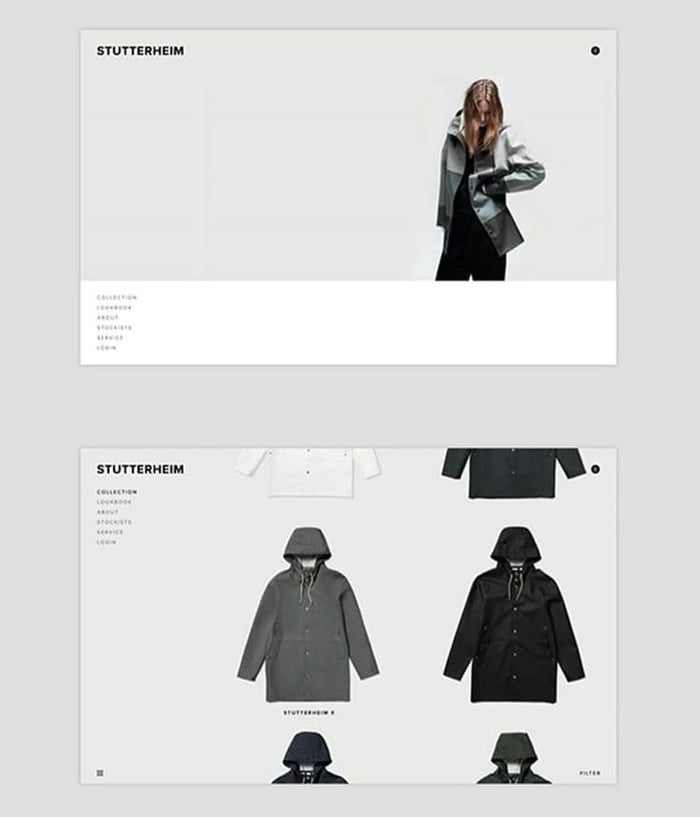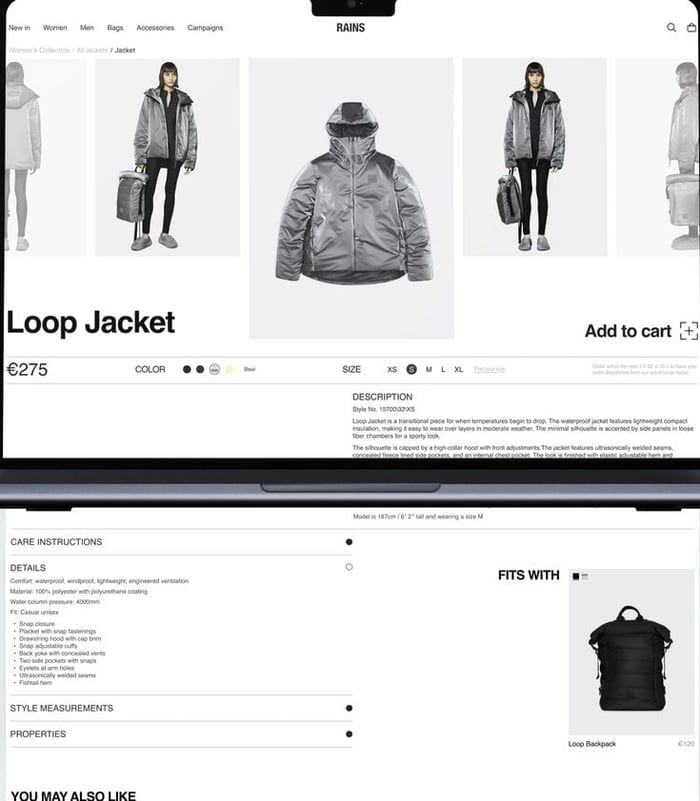10 Trends in Ecommerce to Stay Ahead with the Latest Insights and Innovations
Table of Contents
- Top Trends in Ecommerce
- AI-Driven Personalization
- Conversational Commerce
- Hyper Automation
- Visual Commerce and AR
- Sustainable and Circular Commerce
- Social Commerce
- AI-Driven Personalization
- Conversational Commerce
- Ecommerce and the Subscription Economy
- New Section: Ethics, Inclusivity, and Transparency
- Dynamic Pricing and Smart Merchandising
- Omnichannel Intelligence
- Borderless Ecommerce
- AI-Powered Insights
- Implementation Guide
- Why These Trends Matter
- Final Thoughts: Embrace the Future of Ecommerce with Strategy and the Right Tools
- Modelia: Your Visual Engine for the Future of Ecommerce
- Visuals That Sell. Tools That Scale.
- FAQ: Trends in Ecommerce
The trends in ecommerce industry are constantly changing. Retail has been evolving for some time now, and it's no longer just about brick-and-mortar stores; e-commerce plays a fundamental role. Staying ahead of the curve means staying informed, and that includes leveraging artificial intelligence. In this guide, we break down ten key e-commerce trends that will define the future of small online businesses through 2026. Whether you're a direct-to-consumer (DTC) brand, a marketplace seller, or an established retailer, this knowledge is essential for future-proofing your business.
Understanding these trends gives you a competitive edge. As technology and consumer behavior evolve, keeping up with the latest e-commerce trends ensures your store remains relevant, agile, and ready to grow.

Top Trends in Ecommerce
AI-Driven Personalization
One of the most impactful ecommerce trends is the shift toward hyper-personalized shopping experiences powered by artificial intelligence. AI now processes real-time behavioral data to offer uniquely tailored experiences to each customer.
Instead of static homepages, visitors encounter dynamic storefronts customized by browsing history, purchase behavior, and even weather. AI adapts product recommendations in real time, reorders menus and banners, and learns from every click. Retailers leveraging this kind of personalization have reported conversion lifts of 20–35%.
The future lies in systems that continuously learn and optimize customer journeys automatically. The question is no longer if, but how to use AI in ecommerce to offer personalization that actually converts.

Conversational Commerce
Gone are the days when customers had to browse and click through multiple pages. Conversational commerce is creating direct, human-like shopping interactions through chat, voice and messaging platforms.
By 2026, conversational interfaces will be core to the omnichannel experience. They shorten the sales cycle and improve customer engagement, especially for mobile-first audiences.
Hyper Automation
Efficiency is expected: Hyper automation is expanding beyond fulfillment to nearly every area of ecommerce operations.
Machine learning algorithms handle dynamic pricing, inventory replenishment, fraud detection, and even customer service workflows. Warehouses increasingly rely on robotics and predictive analytics to manage logistics in real time. Accounting systems sync automatically with ecommerce platforms to eliminate manual reconciliation.
Hyper automation reduces human error, speeds up processes, and enables teams to focus on strategy. It is one of the trends in ecommerce that supports sustainable scaling.

Visual Commerce and AR
Visual content is taking center stage and not just in marketing. Shoppers now expect interactive, image-rich product experiences that simulate real-life usage.
Retailers are implementing 3D views, virtual try-ons, and shoppable videos to engage users and reduce uncertainty. Augmented reality allows customers to visualize products in their space or on their body before purchasing, significantly lowering return rates. Brands using AR see improved conversion and metrics.
Sustainable and Circular Commerce
Environmental awareness among consumers is higher than ever and brands are responding with carbon neutral shipping, recyclable packaging and platforms that support resale or product recycling. Transparency about sourcing, supply chain emissions and ethical practices is no longer optional, shoppers expect accountability.
In 2026, sustainability will be a decision-maker. Companies that implement circular commerce models not only appeal to conscious consumers but also gain competitive and cost advantages long term.
Social Commerce
Social media is no longer just for discovery, it’s for shopping. One of the fastest-growing trends in ecommerce is the full integration of commerce into social platforms.
Social commerce enables users to shop directly from TikTok videos, Instagram Reels, or Pinterest pins. Influencers now launch curated storefronts, and livestream shopping allows for real-time engagement and purchase.
As platforms expand their native shopping features, expect the line between content and commerce to blur even more. For brands, it's not just about being present, it's about being shop-ready where their audience already spends time.

AI-Driven Personalization
One of the most impactful future ecommerce trends is the shift toward hyper-personalized shopping experiences powered by artificial intelligence. AI now processes real-time behavioral data to offer uniquely tailored experiences to each customer.
This isn't just about product suggestions, it's about dynamically adapting the entire customer journey. Homepage banners, category displays, and promotional messaging all shift based on user behavior, geography, and preferences.
Retailers leveraging this kind of personalization have reported conversion lifts of 20–35%. The question is no longer if, but how to use AI in ecommerce to offer personalization that drives meaningful business results.
Conversational Commerce
Conversational commerce is gaining speed across demographics. As shoppers move away from traditional browsing, they’re increasingly seeking instant answers and personalized assistance.
Voice assistants like Siri, Alexa, and Google Assistant are being used not just to play music or check the weather, but to reorder essentials, track deliveries, or browse offers. AI-powered messaging systems on WhatsApp, Instagram, and Facebook Messenger allow retailers to create entire sales funnels within chat threads.
These tools blur the line between marketing, support, and commerce, and are an essential component of trends in ecommerce that put the customer at the center.
Ecommerce and the Subscription Economy
Another powerful shift among the trends in ecommerce is the rise of subscription-based models. From fashion boxes and coffee deliveries to digital fitness programs, consumers are opting for convenience, predictability, and personalization.
Why subscriptions work:
Predictable revenue for businesses
Stronger customer loyalty
Lower acquisition costs due to higher LTV
Opportunity for curated, data-driven product selection
Platforms are now offering native tools for subscriptions, making implementation more accessible even for smaller brands. By 2026, ecommerce stores without subscription options may fall behind in customer retention.

New Section: Ethics, Inclusivity, and Transparency
Beyond sustainability, consumers now demand ethical practices and inclusivity from ecommerce brands. This is becoming a key driver in future ecommerce trends.
Modern shoppers want to know:
Who made the products?
Were the workers paid fairly?
Are size ranges inclusive?
Does the brand support social impact?
These values impact brand perception and influence purchasing decisions. Brands that openly communicate their ethics and diversity initiatives are better positioned to build loyal communities.
Integrating these themes isn't just good PR, it’s good business. It reinforces authenticity, which is increasingly important as digital noise rises.
Dynamic Pricing and Smart Merchandising
Modern consumers are price-aware and expect competitive offers. AI-powered dynamic pricing helps retailers adjust prices based on inventory, demand, and competitor activity in real time.
Combined with smart merchandising, which tailors what products are shown to each shopper, this approach boosts conversion and maximizes revenue. For example, if a customer shows interest in summer apparel, the homepage can adapt to feature complementary items at dynamic prices.
Merchandising and pricing strategies will become fully algorithmic by 2026, powered by real-time insights and automation. It’s a core element of both revenue growth and customer experience optimization.

Omnichannel Intelligence
As online and offline shopping merge, future ecommerce trends are focused on delivering consistency across all channels.
Brands are investing in systems that unify customer data, cart contents, inventory, and order history across web, app, social, and physical stores. That means shoppers can: Start a purchase on mobile and complete it in-store, receive personalized offers based on in-store visit and use shared loyalty points regardless of channel
Borderless Ecommerce
Selling internationally is no longer a stretch goal, it’s a necessity. With platforms offering built-in localization tools, the world is more accessible than ever to ecommerce brands.
Key drivers of this trend in ecommerce include:
Multi-currency and multi-language support
Partnerships with global fulfillment centers
Localized payment and tax systems
Region-specific marketing campaigns
The brands that embrace cross-border selling are tapping into massive new markets.

AI-Powered Insights
Business intelligence is evolving from dashboards to decision automation. By 2026, data won’t just inform decisions, it will make them.
Modern AI systems synthesize inputs across marketing, inventory, customer behavior, and finance. They recommend actions such as:
Which products to restock or phase out
Where to allocate ad budget for the best ROI
Which customer segments are likely to churn
What creative formats drive the highest engagement
This is where AI for ecommerce businesses becomes strategic. Companies that embed predictive analytics and decision intelligence into daily operations will act faster and smarter, leaving guesswork behind.
Implementation Guide
Adopting these trends doesn’t happen overnight. Here's how to get started:
Start by identifying one or two trends that align with your business goals, perhaps personalization and automation. Assess your current tech stack and determine what can be optimized or replaced. Then, set clear KPIs and run pilot programs to test the effectiveness of each new tool.
Gradually scale successful implementations and integrate them into your long-term strategy. Monitor industry benchmarks and stay updated as trends evolve. Lastly, train your team, technology works best when people know how to use it well.
Being methodical ensures your transition into these future ecommerce trends is strategic, not chaotic.
Why These Trends Matter
Each of these ten trends represents a critical shift in customer behavior, technology, or industry expectation. They matter because they align with real needs:
Shoppers demand faster, smarter, more relevant experiences
Operations must scale efficiently without ballooning costs
Global competition is fierce, and differentiation is key
Whether it’s through AI, automation, or immersive design, businesses embracing these trends in ecommerce will outpace competitors and strengthen their market position.

Final Thoughts: Embrace the Future of Ecommerce with Strategy and the Right Tools
The future of ecommerce isn't just about following trends, it's about understanding where digital retail is heading and adapting your business to thrive in that reality. As we’ve seen, from AI-driven personalization to immersive shopping experiences and ethical branding, the landscape is changing rapidly. Consumer expectations are higher, competition is tougher, and technology is smarter.
Each of these ecommerce trends reflects a deeper shift in the way people discover, engage with, and buy from brands:
Consumers want hyper-relevant content, instantly.
They expect fluid, cross-platform experiences that feel human and personal.
They shop through conversations, visuals, and emotion, not just clicks and filters.
They care about values like inclusivity, sustainability, and transparency, and they buy from brands that live up to them.
And they demand speed, clarity, and quality in every touchpoint — especially visuals.
To stay competitive, brands need more than a good product. They need an ecosystem that’s agile, intelligent, and visually compelling. That’s where technology becomes your biggest asset, and where Modelia can play a transformative role.
Modelia: Your Visual Engine for the Future of Ecommerce
Modelia is built for the next era of ecommerce, one where speed, personalization, and scalable creativity are not just nice to have, but mission-critical.
As visual commerce, automation, and AI become core pillars of successful online retail, Modelia empowers you to:
Create high-quality, photorealistic product imagery in seconds, with AI generated models, scenes, and lighting.
Adapt visuals to different audiences, channels, and markets, supporting localization and dynamic merchandising without multiple photoshoots.
Scale content production intelligently, so your team can publish more, test faster, and optimize continuously, without increasing costs.
Personalize at scale, matching visuals to customer segments or even individual preferences.
Support circular and sustainable models, by eliminating wasteful samples and physical logistics associated with traditional shoots.
Whether you’re a DTC brand launching your next collection, a marketplace seller optimizing your listings, or a creative team managing hundreds of SKUs, Modelia helps you meet modern ecommerce demands with visual clarity and operational speed.

Visuals That Sell. Tools That Scale.
In a world where attention spans are short and first impressions are made in milliseconds, your product visuals are your storefront. With Modelia, you no longer have to choose between quality and efficiency.
You can be creative, consistent, and conversion-focused, all at once.
So as you begin integrating these 10 ecommerce trends into your roadmap, whether you're exploring conversational commerce, automating operations, or launching in global markets, don't forget to power your strategy with visuals that actually convert.
Because in the end, future-ready ecommerce isn't just about keeping up. It's about standing out.
Ready to transform your visual with AI? Try Modelia now
FAQ: Trends in Ecommerce
What is the main difference between Modelia and Hautech.ai?
Both platforms are focused in creating AI models but Modelia stands out because of its different features and its outfit generator, the first outfit generator developed worldwide.
Which platform is better for fashion brands looking for customization?
Modelia offers more customization options, allowing adjustments to age, ethnicity, size, background and even creating short videos, making it ideal for brands that need versatile and realistic model representations.
How do pricing structures differ between Modelia and Hautech.ai?
Modelia uses subscription and credit plans, including free daily credits and monthly or annual options, whereas Hautech.ai charges per generation depending on the model selected, which can be more flexible for small-scale use but may get costly at higher volumes.
Can both platforms create AI-generated fashion content for marketing?
Yes, both Modelia and Hautech.ai allow fashion brands to generate high-quality images for ecommerce, social media, and campaigns, but Modelia’s added video and background features give it an edge for dynamic marketing content.
How would you rate this article:
Related Articles
- 8 Best AI Video Editing Tools Transforming the Future of Video Production
- Fashion Product Photography: Tips & Tools for Success
- Digital Fashion in the Metaverse: How Virtual Clothing is Shaping the Future of Online Style
- The Top Modelia Tools Transforming Digital Fashion Creation
- Influencer Marketing for Small Business: Step by Step Guide
- Top 5 AI Outpainting Tools to Expand and Complete Your Images with Ease
- 10 Best AI Fashion Free Model Generators
- 7 Best fashion AI tools for designers
- How to Use AI in Ecommerce: Boost Your Sales and Optimize Customer Experience
- How Virtual Fitting Room Technology Is Changing Shopping


